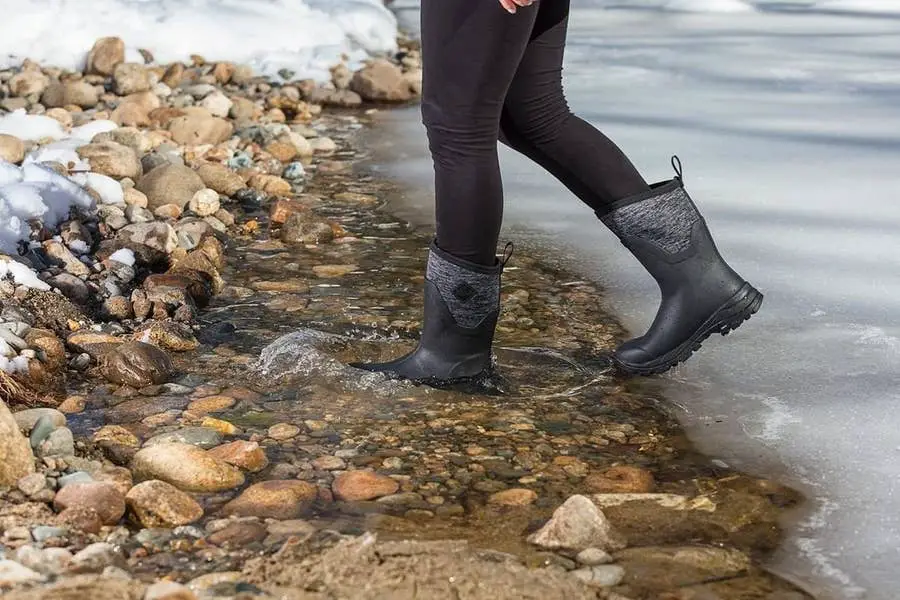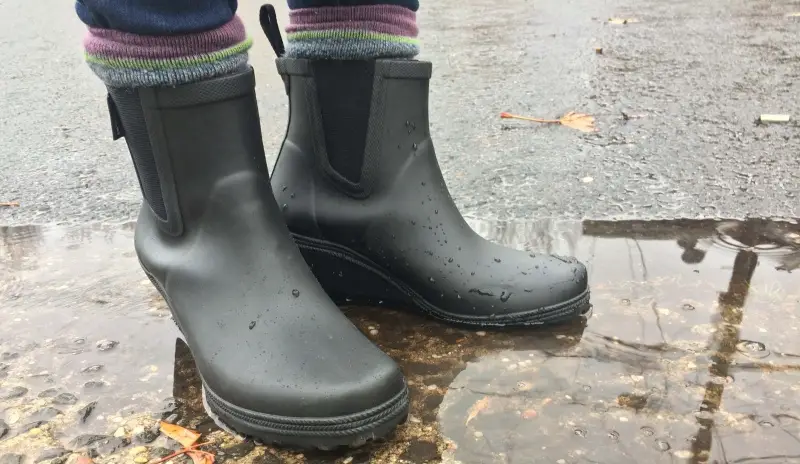Whenever you buy rubber boots, the two important elements that you should look into are security and protection. You want security in all spheres of life and desiring the same from your boots is not too far-fetched.
If your rubber boots are slippery, it can lead to a major accident, and you may not want to get into such a situation. In this article, we list down easy and inexpensive ways to prevent sliding in rubber boots.

Why does slide happen in Rubber Boots?
Before we talk about how you can fix the slide issues with your rubber boot, it is essential to understand the reasons:
1.) Length problem: If your boot size exceeds the length of your feet, you tend to have sliding issues with your rubber boot.
2.) Foot shape: One of the very common problem is Foot shape. It may happen that your feet’ balls may be somewhat wider than your heels. If this is the case with you, follow the methods discussed here for prevention of sliding.
3.) Arch problem: When the issue is related to arch, it means that your boots are unable to provide the correct support to your arches. Thus, the slipping issue arises.
What Are The Ways To Prevent Sliding In Rubber Boots?
You can pick one or more ways from the list below in order to prevent sliding in rubber boots. Evaluate the list and choose which suits you the best:
1.) Pick the right size – Be it rubber boots or any other boot, the right size is a must to have – you should not compromise on the size. You should buy rubber boots that completely fit your feet, or else the slipping and sliding will be unavoidable.
Here is something you may not know – the size of your feet fluctuates. Yes, you read it right. Hence, it is best to buy a pair either in the early evening or late noon.
Also, if you have bought a shoe previously, do not assume you will need the same size again. Check your size every time you purchase boots.
2.) Socks will help – Most people don’t wear socks with rubber boots but ideally, you should wear socks with your rubber boots to avoid getting painful blisters.

You should buy special socks that are made to be slip-resistant. Mostly, such socks come with a rugged bottom. Thus, it helps your feet to stay properly and well in place. This happens because of the friction that is generated between your boots and the shoes.
However, if you do not wish to spend a lot of bucks on special socks, you can try filling the space in your shoes with the thick socks you already have. This will give your feet the exactly stability it deserves.
3.) Your walking style – Many times, it is found that the reason people slide in a rubber boot is because of their walking style. The right way to walk with rubber boots is – to place your heel first and then your toe.
It is similar to what women with high heels practice – they really slip or slide, right? If you decide to pursue this method, you will definitely solve all the sliding issues that you are facing.
4.) Insoles – If none of the methods is working for you, you can try to fit more snug insoles in your rubber boots – it can be an effective way to prevent sliding.
Insoles fill the space that remains between the top of your boot and the top of your foot. It also means that there is quite less space for your foot to move about here and there whenever you walk.
If you have flat feet, insoles make the boots more comfortable to wear for long hours, especially if you have a job to stand a lot in a day.
5.) Add rubber glue and salt mixture – Add a grainy texture to your rubber boot’s soles. It will also help prevent you from sliding. Combine rubber glue and salt to coat your shoes.
The mixture will add a non-slip component to your rubber boot. For rubber-soled shoes, plastic fusion epoxy adhesive works better than rubber glue.
6.) Scuff the sole – To scuff the soles, you should walk on concrete, asphalt, or other rough and hard surfaces. The scratchy surface will shamble the sole, thus improving traction. It is a time-consuming process, thus it would probably some time before you begin to experience results.
Alternatively, you can rub the sole with an emery board or with a piece of fine-grained sandpaper. Rub just enough to scuff the surface of the sole. Keep in mind that you use coarse-grained sandpaper – your aim is to scuff the sole, and not tear it into pieces.
7.) Sole guard – You can purchase a sole guard from any local shoe store. Follow the instructions that are mentioned on the package in order to install it on the bottom of your boot.
They are available for rubber boots, however, it may not be easy to find them. Alternatively, one of the simpler options is to take your rubber boots to your local cobbler and have sole guards professionally installed.
Here are some most commonly asked questions about sliding in Rubber Shoes:
Why Rubber boots are the Worst Monsoon Footwear?
Rubber boots are not exactly skid-friendly. The biggest drawback of wearing rubber boots or slippers in the monsoons is the unlikeable spray of mud that will arise from the back of the footwear, after coming in contact with the wet dirt from the ground.
Are Leather Shoes more slippery than Rubber Boots?
Leather has a smooth finish. Thus they are not equipped to provide traction like rubber boots. Rubber shoes provide high-level of traction because they have rough nature. Thus, leather shoes are more slippery than rubber boots.
How do the soles of Shoes affect friction?
If a shoe sole touches the floor surface when wet or lubricated, the liquid will be squeezed out of the contact area.
There is a fluid that separates the floor from the sole, so there is less friction between the two surfaces. Shoe soles that come with various designs and types are very common nowadays.
Conclusion
The first thing you need to understand is the reason you are or you may face sliding problems once you buy the rubber boots.
Depending on the reasons, you can opt for solutions from the above list. Safety in rubber boots should be your top priority, and if you need to make additional efforts, you should not shy away.








